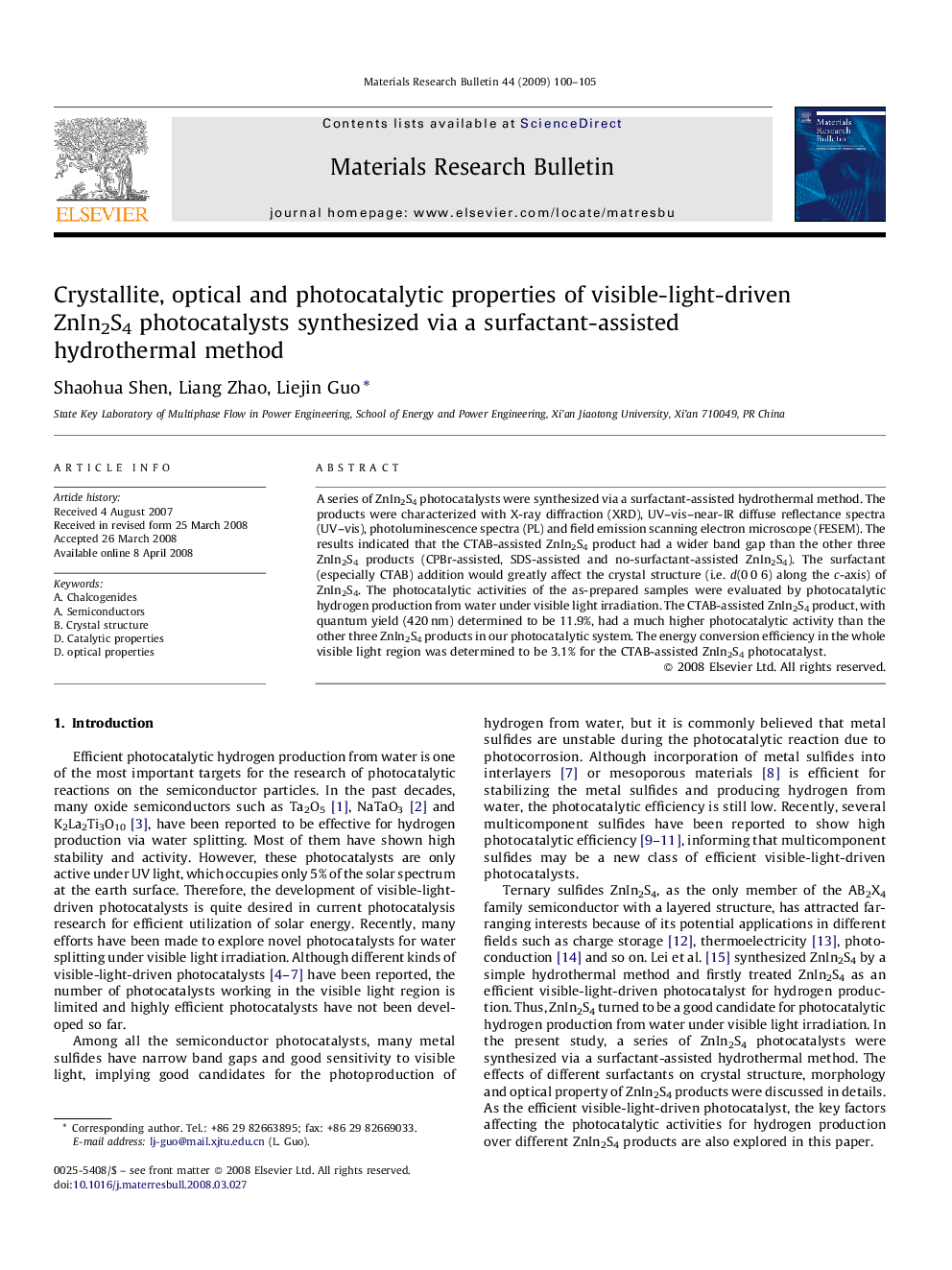| Article ID | Journal | Published Year | Pages | File Type |
|---|---|---|---|---|
| 1491598 | Materials Research Bulletin | 2009 | 6 Pages |
A series of ZnIn2S4 photocatalysts were synthesized via a surfactant-assisted hydrothermal method. The products were characterized with X-ray diffraction (XRD), UV–vis–near-IR diffuse reflectance spectra (UV–vis), photoluminescence spectra (PL) and field emission scanning electron microscope (FESEM). The results indicated that the CTAB-assisted ZnIn2S4 product had a wider band gap than the other three ZnIn2S4 products (CPBr-assisted, SDS-assisted and no-surfactant-assisted ZnIn2S4). The surfactant (especially CTAB) addition would greatly affect the crystal structure (i.e. d(0 0 6) along the c-axis) of ZnIn2S4. The photocatalytic activities of the as-prepared samples were evaluated by photocatalytic hydrogen production from water under visible light irradiation. The CTAB-assisted ZnIn2S4 product, with quantum yield (420 nm) determined to be 11.9%, had a much higher photocatalytic activity than the other three ZnIn2S4 products in our photocatalytic system. The energy conversion efficiency in the whole visible light region was determined to be 3.1% for the CTAB-assisted ZnIn2S4 photocatalyst.
